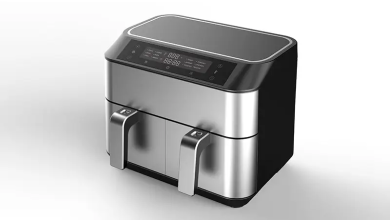ULIP Lock-in Period – Turning Constraints into Tax Advantage

Unit Linked Insurance Plans (ULIPs) are long-term savings options that allow you to accumulate funds for your life goals through investments in the capital market. These funds can be used to buy property, pay for your children’s education, or build a retirement fund. It’s important to note that ULIPs are designed for long-term goals, so it is advisable to avoid unnecessary withdrawals unless necessary. To encourage long-term investments, ULIPs come with a lock-in period.
What is a Lock-in Period in ULIP, and Why is it Important?
Now that you know what is ULIP, it is important to understand the importance of a lock-in period in ULIP. During the lock-in period of a ULIP, which is typically five years, you cannot withdraw or liquidate the accumulated funds. However, you can withdraw partially from your ULIP policy after this period. You can withdraw up to 20% of the fund value in a policy year without incurring charges.
Let’s take an example to understand this better. Rahul, a 30-year-old male, purchased a policy term of 20 years. He decided to pay ₹ 1 Lakh per year as a premium, and the life cover for the plan was ₹ 10 Lakh. After completing five years of his policy, Rahul can now withdraw up to ₹ 1,50,000 (20% of his fund value) in the 6th year of his policy without any charges. This allows him to comfortably handle expenses such as his son’s admission to boarding school.
Benefits of Staying Invested in ULIPs After the Lock-In Period Ends
Many individuals consider exiting their ULIPs once the lock-in period ends. However, there are several reasons why it may be beneficial to stay invested in a ULIP even after this period:
- Low Charges in the Long Run: ULIPs come with various charges, such as premium allocation charges, policy administration charges, and fund management fees. These charges are higher in the initial years but gradually reduce over time. By staying invested for a longer duration, the impact of these charges on your fund value decreases significantly.
- Chances of Profits on Long-Term Investments: ULIPs are designed for long-term investments, typically 15-20 years. By staying invested longer, you have a better chance of earning profits and maximising your wealth. Insurance providers also offer loyalty benefits through extra units for policyholders who stay invested over the long term.
Utilising ULIPs’ Tax Advantages
ULIPs not only provide potential returns and life cover but also offer tax advantages that can help you optimise your financial planning.
- Tax-Free Withdrawals: Any withdrawals made from your ULIP are tax-free under Section 10(10D) of the Income Tax Act, 1961, after completing the lock-in period. This means you can enjoy the returns from your ULIP without paying any tax on the amount withdrawn.
- Tax Deductions on Premiums Paid: The premiums paid towards your ULIP are eligible for tax deductions under Section 80C of the Income Tax Act, up to a maximum limit of ₹ 1.5 Lakhs per financial year. This allows you to reduce your taxable income and save on taxes.
- Wealth Creation with Capital Gains Tax Advantage: ULIPs also offer long-term capital gains tax advantage benefits. If you hold your ULIP for more than one year, any gains made on the investment are considered long-term capital gains, which are taxed at a lower rate than short-term capital gains.
Example:
Suppose you invest in a ULIP, and after five years, your fund value has grown from ₹ 5 Lakhs to ₹ 7 Lakhs. If you decide to make a partial withdrawal of ₹ 1 Lakh, there will be no tax implications since it falls within the permissible limit of 20% of the fund value. Additionally, if you hold the ULIP for more than one year before making a withdrawal, any gains on this investment would be subject to long-term capital gains tax rates, providing further tax advantages.
Aligning ULIPs with Your Financial Goals
To make the most of your ULIP investments, it’s essential to align them with your financial goals:
- Define Your Goals: Determine your short-term and long-term financial goals, such as buying a house, funding higher education, or building a retirement corpus.
- Assess Your Risk Appetite: Understand your risk tolerance and choose ULIP funds based on your risk profile. ULIPs offer different fund options ranging from equity-oriented funds for higher returns to debt-oriented funds for more stable returns.
- Choose Suitable ULIP Options: Depending on your financial goals and risk appetite, select a ULIP plan that aligns with your needs. Consider factors such as the flexibility to switch between funds, loyalty benefits, life cover options, and additional rider benefits.
Comparing ULIP Fund Options Over 10 Years
The table below compares the potential returns of different fund options within ULIPs over 10 years:
| Fund Option | Average Annual Return (%) |
| Equity-Oriented | 12 |
| Balanced | 10 |
| Debt-Oriented | 8 |
Conclusion
The lock-in period in ULIPs may initially seem like a constraint, but it offers numerous advantages when understood and utilised effectively. You can benefit from lower charges and potentially higher returns by staying invested beyond the lock-in period. Additionally, ULIPs provide tax advantages that optimise your financial planning by offering tax-free withdrawals and deductions on premiums paid. It’s essential to align your ULIP investments with your financial goals and assess your risk appetite accurately.




